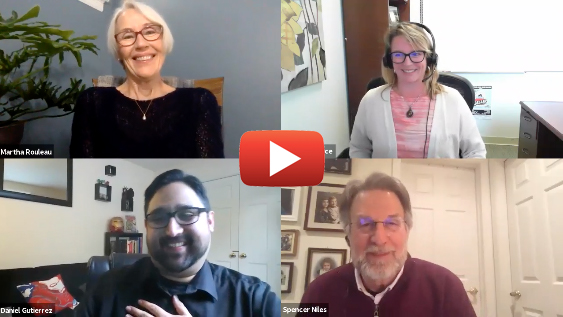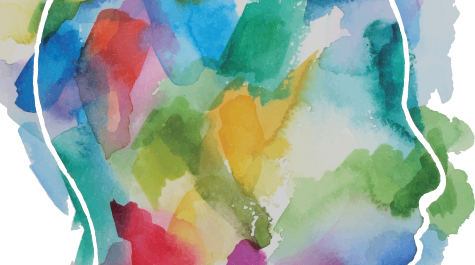A guide to mindfulness for the person who is always busy
As a challenging semester comes to an end, we asked Natasha Townsend M.Ed. ‘21, a master’s student in Clinical Mental Health Counseling, to share strategies to help individuals and families better cope with stress through mindfulness.
In a time of stress, mindfulness can help us switch from autopilot mode and human “doing” to human “being.”
The term “mindfulness” seems abstract for many of us because it goes against our natural tendencies to be productive and the sense of comfort that comes from preparing for the future. The idea of mindfulness rests on an opposite premise: simply being in the present moment with nothing to do, nowhere to go, and nothing to attain.
The pandemic has made people reexamine their values in a way they have never dealt with before as our health, jobs, and education have been at the forefront of our minds and we feel like we have to choose between these values and our families. For most of us, self-care gets pushed to the bottom of this neverending list. The more demands we place on ourselves, the less energy we have to tackle them, which inevitably leads to stress.
Chronic stress impacts us more than we think, from the health of our immune system to our relationships with the people around us. When we feel like we don’t have the resources to deal with the demands of our environment, our ability to cope is compromised, creating a domino effect that impacts the entire family’s stress levels and emotional well-being. The inner self critic and the outside pressure to be the best employee and parent keep the dominoes in motion.
Mindfulness can break this cycle and has been linked to well-being in many ways, including stress management, emotional regulation, and even chronic pain. Through meditation, people can have more control and be able to escape negative emotions.
 In the School of Education’s webinar earlier this year, Mindfulness for Families during the Pandemic, Daniel Gutierriez, assistant professor of counselor education, and Martha Rouleau, adjunct lecturer, describe mindfulness as surfing the waves and leaning into the wind of the emotions one feels, whether they are pleasant or unpleasant.
In the School of Education’s webinar earlier this year, Mindfulness for Families during the Pandemic, Daniel Gutierriez, assistant professor of counselor education, and Martha Rouleau, adjunct lecturer, describe mindfulness as surfing the waves and leaning into the wind of the emotions one feels, whether they are pleasant or unpleasant.
Below are some tips and tricks that can bring more mindfulness into your life. Gutierriez and Rouleau emphasize that short amounts of time spent meditating can have an immediate effect as well as a long-term improvement in the ability to recover from life stressors.
The big idea:
- Approach thoughts and emotions with curiosity rather than trying to analyze them.
- Be kind toward ourselves.
- Practice gratitude.
- Schedule self-care and prioritize family conversations about what each individual needs and how to schedule that self-care.
- Manage our energy as opposed to managing our time for work.
- Incorporate changes in routine for fun activities.
- Enjoy the small moments, such as the first few sips of coffee in the morning.
Strategies for a more mindful family:
- Minimize media use: Decrease negative news consumption or social media to reduce comparing yourself to others.
- Purposeful pauses: For example, everytime you stand up or touch a doorknob, think of your five senses to bring you into the present moment.
- Breathing buddy: Everyone finds a stuffed animal or pillow and places it on their belly, which helps children become familiar with using their breath as a calming technique.
- Scrunch and let go activity: Squeeze your muscles as you inhale and then relax as you exhale.
- Nature walk: Spend time outside, and practice expanding your view to the farthest point you can see and then looking at your nearest surroundings, which can help us recognize that in the difficult moments, there is another view.
Mindfulness with teens:
- Model mindfulness skills, such as breathing and focusing on the senses when emotions are strong.
Think about how mood can be like the weather, and remember that thoughts and emotions are not permanent. - Provide positive encouragement for expressing emotions with one another.
- Mindfulness apps such as Headspace or Calm.
- Okay Zone: practice boundaries by naming your limits and talk with one another when people are within or outside of their Okay Zone.
During especially difficult times, it can be helpful to think of the oxygen-mask theory: we can’t help others if we are not caring for ourselves.
